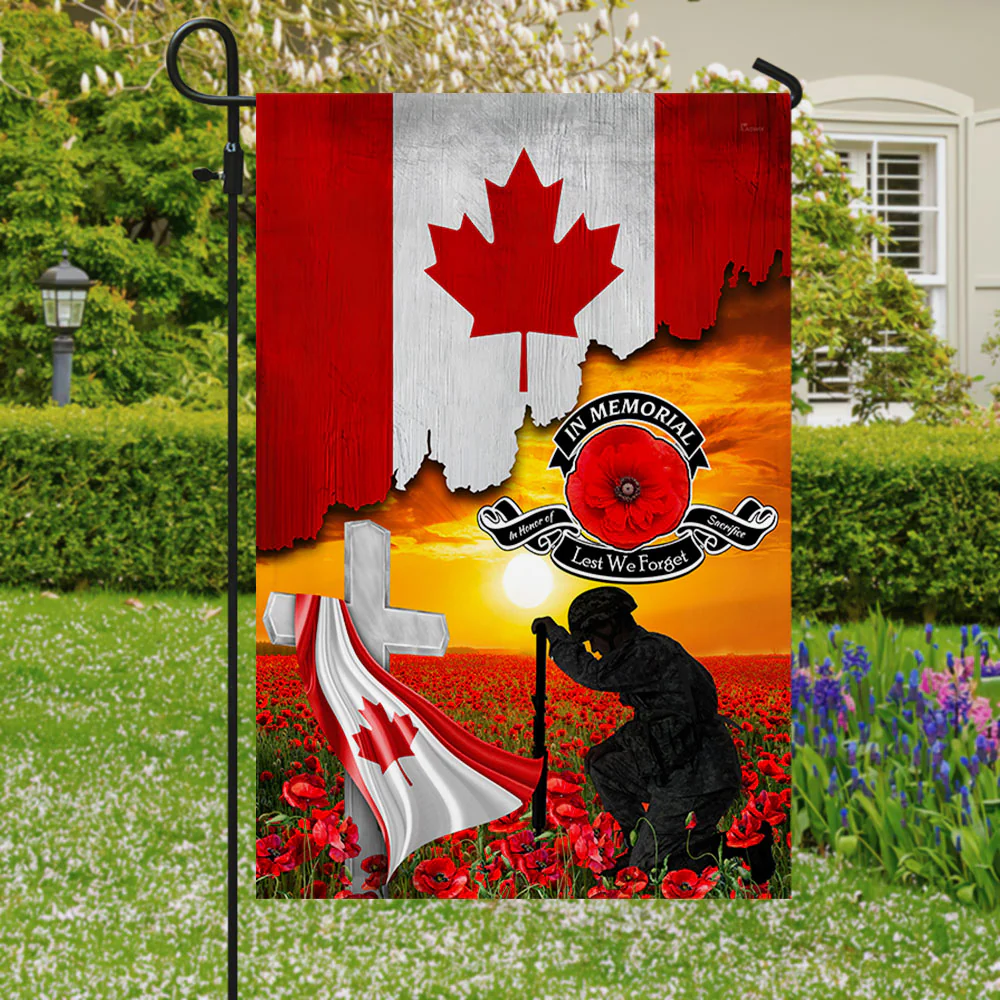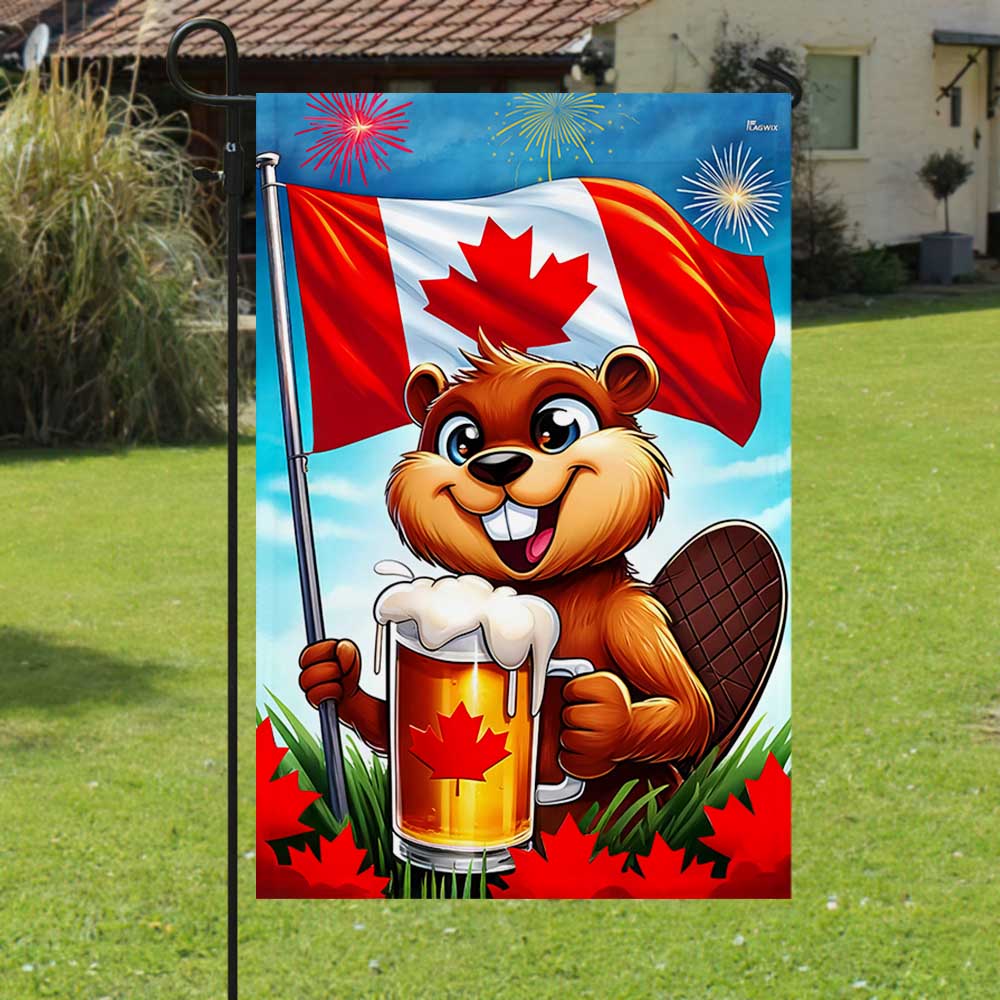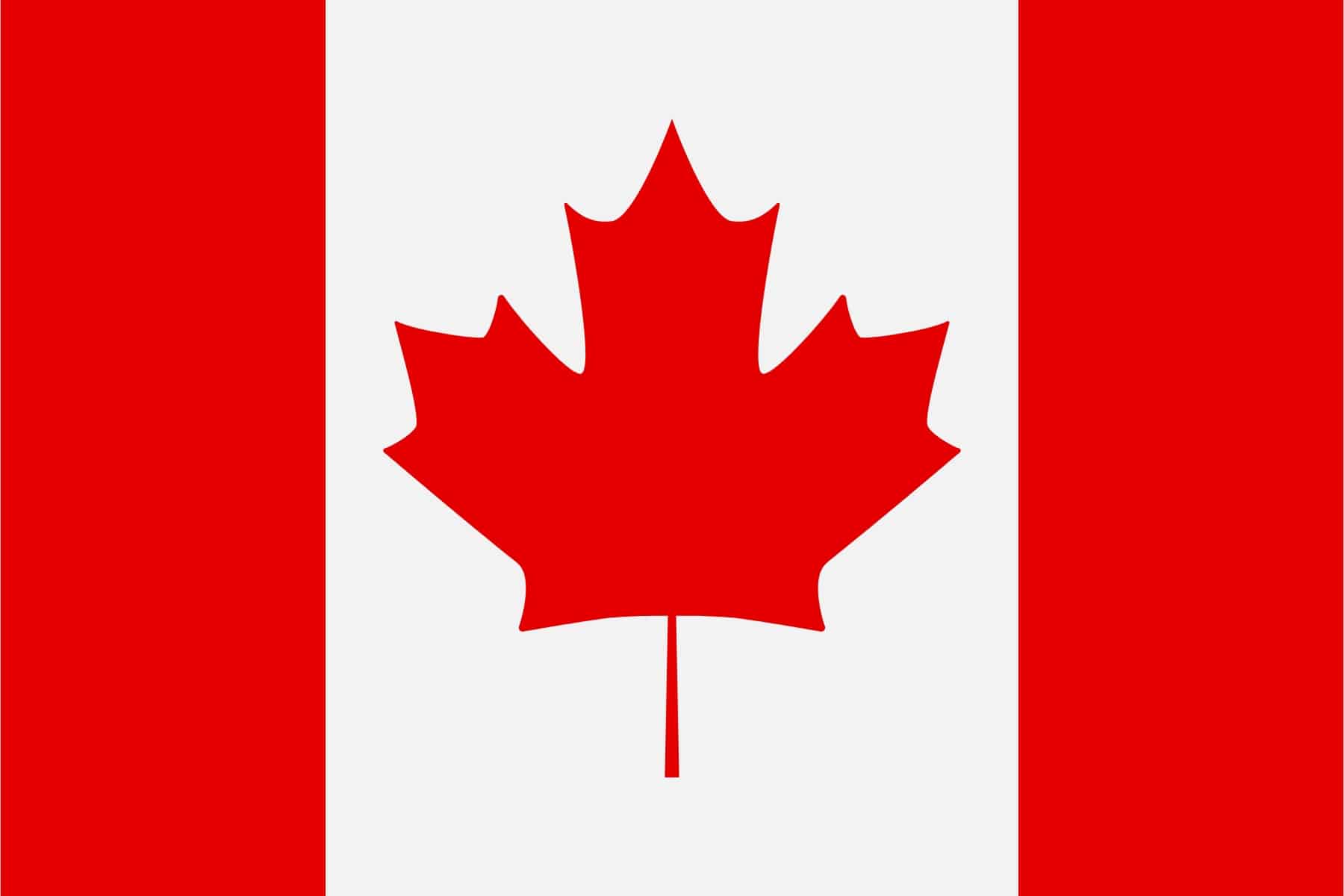Estimated reading time: 7 minutes
The flag of Canada, known as the Maple Leaf flag, is more than just a piece of fabric. It’s a powerful symbol of national identity, pride, and heritage. In this blog post, we will dive deep into the design, history, and significance of the Canada flag, providing insights that engage and inform our audience. Whether you’re a Canadian navigating the vast landscape of national symbols or an American curious about your northern neighbor’s identity, this article is for you!
Contents
- 1 Key Takeaways
- 2 Table of Contents
- 3 The Design of the Canadian Flag
- 4 Canada Flag History
- 5 Symbolism and Meaning
- 6 Dimensions and Proportions
- 7 Etiquette for The Flag of Canada
- 8 Commemorating the Canadian Flag
- 9 Interesting Facts about the Maple Leaf Canada Flag
- 10 Unique Canadian Flag Designs from Flagwix
- 11 Conclusion
- 12 FAQ
Key Takeaways
- The Canadian flag symbolizes unity, peace, and pride for Canadians.
- The Maple Leaf has been a national emblem since the 19th century, representing Canada’s rich natural heritage.
- The current design was officially adopted on February 15, 1965 after much debate and national discussion.
- The flag’s red and white colors have deep symbolic meanings: prosperity, hope, and tranquility.
- Protocols exist for respectful flag usage, and flag etiquette is an important part of Canadian tradition.
Table of Contents
- The Design of the Canadian Flag
- Canada Flag History
- Symbolism and Meaning
- Dimensions and Proportions
- Etiquette for The Flag of Canada
- Commemorating the Flag
- Interesting Facts about the Flag
- Conclusion
- FAQ
The Design of the Canadian Flag
Colors and composition
The Canadian flag consists of a vertical triband design featuring two red bands on the sides and a wide white band in the center. Dominating the white band is a striking red maple leaf with 11 points.
- Red signifies prosperity and hope.
- White represents peace and tranquility.
This simple yet powerful combination speaks volumes about Canada’s values and aspirations.
The maple leaf: A national emblem
The maple leaf has been a Canadian symbol since 1868, representing the nation’s natural heritage. It’s a testament to Canada’s rich forests and diverse ecosystems. Over time, the leaf has evolved into a recognized emblem on military insignias, uniforms, and logos. The stylized version of the flag embodies the spirit of unity among Canadians.
Canada Flag History
Origins
Prior to the adoption of the Maple Leaf flag in 1965, Canada used various flags, including those featuring the British Union Jack. The quest for a distinct national flag grew during the 20th century, particularly as Canadians sought to establish their own identity separate from British colonial ties.
Adoption of the flag
The Canadian flag was officially adopted on February 15, 1965, becoming a national symbol in its own right. This day is now commemorated annually as National Flag of Canada Day. The shift to this emblem reflects Canada’s desire to assert its identity and celebrate its diverse heritage.
Symbolism and Meaning
The Canadian flag is rich in symbolism. Let’s explore some of its core meanings:
A symbol of unity
The red and white colors unify Canadians from various backgrounds. The simplicity of the design fosters a sense of shared identity and belonging, making it an all-inclusive symbol that’s embraced by all Canadians, regardless of their origins.
An emblem of pride
Flying the Canadian flag represents pride in Canadian values, such as peace, diversity, and multiculturalism. It reflects a commitment to inclusivity and the celebration of distinct cultures that contribute to the nation.
Dimensions and Proportions
Did you know that the Canadian flag’s width is twice its height? The white band between the red bands is twice as wide as each red band, creating a balanced visual appeal.
- Width to Height Ratio: 1:2
- Maple Leaf Design: Centrally placed, it commands attention.
Etiquette for The Flag of Canada
When displaying the flag, there are specific protocols to follow.
Display and positioning
The Canadian flag should be displayed in the position of honor, on the right from the observer’s perspective, when displayed with other flags. When displayed with provincial or territorial flags, the Canadian flag takes precedence. It should be raised briskly and lowered ceremoniously.
Proper treatment
The flag should never touch the ground, floor, or water. It shouldn’t be used as clothing, bedding, or drapery, though it can be draped over a casket. The flag should not be used for advertising purposes or have anything placed on it, like letters, insignia, or drawings.
Flying conditions
The flag can be displayed 24 hours a day if properly illuminated at night. During severe weather, it should be taken down unless it’s an all-weather flag. When the flag becomes worn or faded, it should be disposed of respectfully, typically by burning it privately.
Half-mast protocol
The flag is flown at half-mast on specific days of mourning or as directed by government officials. When raising to half-mast, first hoist it to the peak briefly, then lower it. When lowering from half-mast, raise it to the peak first before taking it down completely.
Indoor display
When displayed indoors, the flag should be on the right side of a speaker or platform from the audience’s perspective. If displayed flat against a wall, ensure it’s oriented correctly with the red maple leaf pointing upward.
>>> For more details, consult the official flag etiquette guide.
Commemorating the Canadian Flag
National Flag of Canada Day is celebrated every year on February 15. This day serves to remind Canadians of their shared heritage and encourage them to reflect on the values the flag represents. Communities often hold events featuring speeches, parades, and flag-raising ceremonies to honor the symbol of their unity.
Interesting Facts about the Maple Leaf Canada Flag
Here are some lesser-known and fascinating facts that highlight the history, symbolism, and cultural importance of Canada’s national flag.
1. The Canadian Flag Is Relatively New
Despite Canada’s long past, the current maple leaf flag was only officially adopted on February 15, 1965. Before that, Canada primarily used the Red Ensign, which included British elements. The adoption of the new flag marked a clear step toward a uniquely Canadian identity.
2. The Flag Was Adopted in 1965 After Intense Debate
Many assume the Canada flag has been around since Confederation in 1867, but it was only officially adopted on February 15, 1965. Before this, Canada used the Red Ensign, a colonial flag featuring the Union Jack.
As Canada moved toward a stronger national identity, the need for a distinct symbol became urgent. The government launched a heated debate in Parliament, known as the “Great Flag Debate,” which involved over 250 speeches and lasted six weeks.
The new flag was ultimately chosen to represent a break from colonial ties and embrace a uniquely Canadian identity.
3. The Maple Leaf Has Been a Canadian Symbol Since the 1700s
The maple leaf appeared as a Canadian symbol as early as the 18th century. Indigenous peoples had long used maple sap for food and medicine. In the 1800s, Canadian military regiments began incorporating the maple leaf into their insignias.
By 1868, it appeared on the national coat of arms for Ontario and Quebec. The leaf came to represent the vast natural landscape of Canada and the resilience of its people, eventually earning its place at the center of the Canada flag.
3. Its Design Was Inspired by a Military College Flag
The flag’s clean and symmetrical design was suggested by Dr. George F. G. Stanley, a historian and former soldier. He based his proposal on the flag of the Royal Military College of Canada, which featured a red-white-red color scheme with a central emblem.
Stanley believed that a simple design would be easy to recognize and draw, making it perfect for national representation. His idea was chosen from over 3,500 submissions during the national flag design competition.
4. The Maple Leaf Has 11 Points—But They Don’t Represent Provinces
One common myth is that the 11 points on the maple leaf symbolize Canada’s provinces and territories. In reality, the points were carefully designed by graphic artists for visual balance and wind resistance.
The stylized shape ensures the leaf looks clean and symmetrical even when the flag is flying. It’s not based on any specific species of maple tree, either—it’s purely a symbolic, graphic creation.
5. Red and White Are Canada’s Official Colors
The red and white colors of the Canada flag were declared the official national colors by King George V in 1921. Red symbolizes bravery and sacrifice, while white represents peace and honesty. These colors also have roots in British and French heritage, making them ideal for uniting Canada’s diverse cultural history in one flag.
Unique Canadian Flag Designs from Flagwix



>>> Read more:
Conclusion
The Canadian flag, with its vibrant colors and meaningful symbol, represents much more than just the nation itself; it embodies values of peace, unity, and pride that resonate with Canadians and admirers worldwide. As a business, understanding these cultural symbols allows you to engage more effectively with audiences in both Canada and beyond.
Engage with Us!
What does the Canadian flag mean to you? Share your thoughts in the comments below. At Flagwix, we believe in fostering pride and connection among communities through visual representations like flags. Explore our collection of flags today and find something that speaks to your identity!
FAQ
Q: When was the current Canadian flag introduced?
A: The current flag was officially adopted on February 15, 1965. This day is now celebrated as National Flag of Canada Day.
Q: What does the maple leaf on the flag symbolize?
A: The maple leaf is a long-standing emblem of Canada, symbolizing the country’s natural resources, unity, and national pride.
Q: Are there rules for how the flag should be displayed?
A: Yes, there are protocols outlined in the Government of Canada’s Flag Etiquette Guide that specify respectful ways to display and handle the flag.
Q: Why were red and white chosen as the flag’s colors?
A: Red and white are Canada’s official national colors, as declared by King George V in 1921. Red stands for prosperity and hope; white stands for peace and tranquility.
Q: Where can I find more information about Canadian flags or buy one?
A: For more detailed information, visit the Canadian Heritage government page, or check out the exclusive flag collections at Flagwix.

I am a writer with a passion for flag history, symbolism, and design. I love exploring the deeper meanings behind flags and how they connect people, traditions, and personal expression.



